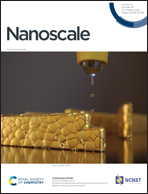Electronic and excitonic properties of ultrathin (In,Ga)N layers: the role of alloy and monolayer width fluctuations
Abstract
We present an atomistic theoretical analysis of the electronic and excitonic properties of ultrathin, monolayer thick wurtzite (In,Ga)N embedded in GaN. Our microscopic investigation reveals that (i) alloy fluctuations within the monolayer lead to carrier localization effects that dominate the electronic and optical properties of these ultrathin systems and that (ii) excitonic binding energies in these structures exceed the thermal energy at room temperature, enabling excitonic effects to persist even at elevated temperatures. Our theoretical findings are consistent with, and provide an explanation for, literature experimental observations of (i) broad photoluminescence linewidth and (ii) excitonic effects contributing to the radiative recombination process at elevated temperatures. When accounting for small structural inhomogeneities, such as local thickness fluctuations of one monolayer, “indirect” excitons may be found, with electrons and holes independently localized in different spatial positions. This result also provides further arguments for experimentally observed effects such as (i) non-exponential decay curves in time dependent photoluminescence spectra and (ii) the “S”-shape temperature dependence of the photoluminescence peak energies. Overall, our results provide fundamental understanding, on an atomistic level, of the electronic and optical properties of ultrathin, quasi 2D (In,Ga)N monolayers embedded in GaN, and offer guidance for the tailoring of their properties for potential future device applications.



 Please wait while we load your content...
Please wait while we load your content...